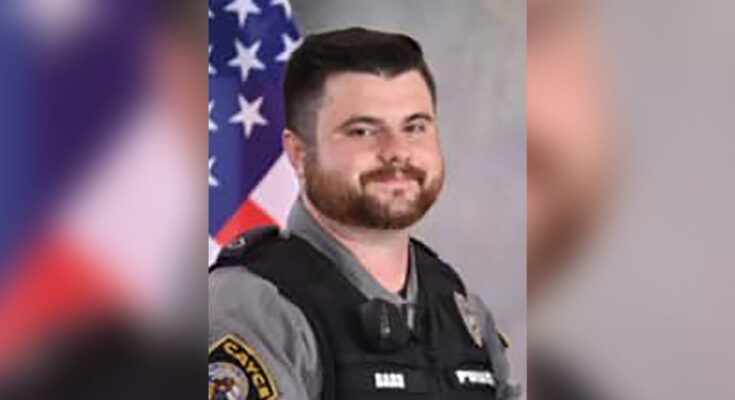A former South Carolina police officer has been formally charged following an on-duty dispute that escalated while he was still in uniform.
A former police officer from South Carolina is now facing criminal charges following a contentious incident that occurred while he was still wearing his uniform and actively serving in his official capacity. The case has drawn sharp scrutiny and ignited debates about the boundaries of authority, professional conduct, and accountability in law enforcement.
According to official reports and court documents, the former officer—whose name has not been released publicly pending further legal proceedings—was involved in an altercation that occurred during a routine interaction with a member of the public. What began as a seemingly minor dispute reportedly escalated rapidly, with multiple eyewitnesses claiming that the officer used excessive force and behaved in a manner that was deemed by his own department as a violation of both departmental policy and the law.
The incident occurred in the early evening hours in a suburban neighborhood not far from Columbia. According to witnesses and surveillance footage from nearby residences, the officer responded to a call involving a noise complaint. Upon arriving at the scene, he allegedly became engaged in a verbal confrontation with a resident who questioned the legitimacy of the complaint. The exchange quickly turned tense. Eyewitnesses claim the officer shouted at the resident, threatened arrest without clear cause, and ultimately used physical force that many have described as disproportionate to the situation.
Several residents in the area began recording the interaction with their cell phones. At least two videos were posted online and quickly went viral, sparking outrage on social media and prompting local news outlets to investigate. In the videos, the officer can be seen arguing with a man on a porch, raising his voice, and forcibly restraining him despite apparent efforts by the individual to deescalate the confrontation. The videos, though only partial in duration, contributed significantly to public perception of misconduct.
The officer’s department, facing immediate public backlash, placed him on administrative leave pending an internal investigation. That probe, which involved interviews with witnesses, review of body camera footage, and consultation with legal experts, concluded within weeks. The findings were then turned over to the local solicitor’s office. Prosecutors determined that there was sufficient evidence to pursue criminal charges.
In a statement from the solicitor’s office, officials confirmed that the former officer has been charged with misdemeanor assault and misconduct in office. While the charges are not felonies, they are serious enough to warrant a court appearance and potential sentencing, including jail time, fines, or probation. The former officer has since resigned from the department, a move that some officials interpreted as an effort to avoid further administrative penalties, though he remains subject to the criminal justice process.
Community members have voiced mixed reactions to the development. Some expressed relief that legal action is being taken, viewing it as a rare example of accountability in a system often criticized for shielding law enforcement officers from consequences. Others, including a few who support law enforcement efforts in the area, questioned whether the officer was being unfairly targeted due to the political climate surrounding police-community relations. Still, the overwhelming public sentiment appears to support the decision to bring the matter to court.
Local civil rights advocates have weighed in, calling for broader reforms in how law enforcement officers are trained to handle disputes, particularly those involving verbal challenges or nonviolent resistance. One prominent activist stated that while the charges are a step in the right direction, the focus should now turn to systemic issues that allow such incidents to occur in the first place.
The police department involved in the case has also issued a formal statement. The chief of police acknowledged the seriousness of the incident and pledged to improve training and oversight procedures within the department. He emphasized that the actions of one officer should not reflect on the integrity and dedication of the department as a whole, but admitted that changes must be made to rebuild trust in the community.
Meanwhile, attorneys for the former officer have indicated that they intend to vigorously fight the charges. In a prepared statement, the legal team claimed that their client was simply trying to enforce the law under difficult circumstances and acted within the scope of his authority. They argued that the video footage does not tell the whole story and plan to present evidence that will provide additional context to the officer’s behavior that night.
The upcoming court proceedings are expected to be closely followed, both locally and nationally. The case fits into a larger narrative across the country where the public is increasingly demanding transparency and accountability from law enforcement. While each case differs in specifics, the common thread of ensuring officers do not abuse their power remains at the center of public discourse.
The Department of Justice has also taken an interest in the case, though there has been no indication thus far that federal charges will be filed. Still, observers note that cases like this one often draw scrutiny from federal agencies tasked with overseeing civil rights violations and ensuring that local governments uphold constitutional protections.
Legal experts suggest that the prosecution will likely focus on showing that the officer’s actions were not just improper but criminally reckless, given the responsibilities of his position. They may call witnesses who were present at the scene, including neighbors and the man with whom the officer argued, as well as present video footage and body cam evidence. The defense, on the other hand, is expected to argue that the officer was responding to a perceived threat and that his training may have conditioned him to act swiftly, albeit imperfectly.
Public opinion may also play a role in the outcome. Although the case will be decided in court based on evidence and legal arguments, judges and juries are not immune to the social context in which trials take place. Widespread media coverage, community rallies, and commentary from advocacy groups could influence how the case is perceived and, ultimately, adjudicated.
In the wake of the incident, city officials have called for calm and urged the public to allow the legal process to unfold. Several town hall meetings have been scheduled to give residents a platform to voice concerns and ask questions about police procedures. The mayor has promised to work with community leaders to review current policies and to consider implementing a civilian oversight board.
For the victim in the case, the road to justice may be long and uncertain. Though he was not seriously injured in the incident, the emotional and psychological impact has been significant. He has retained legal representation and may pursue a civil lawsuit against the former officer and the police department for damages stemming from the confrontation.
This case represents yet another example of how critical it is for police departments to train officers not only in technical and tactical skills but in communication, conflict resolution, and emotional intelligence. Experts argue that these competencies are crucial for avoiding unnecessary escalation in routine encounters with the public.
While the legal process is still in its early stages, the implications are already being felt far beyond the courtroom. Other departments around South Carolina—and indeed, around the nation—are watching closely. Whether this case results in conviction or acquittal, it will likely serve as a reference point in discussions about police accountability, the limits of authority, and the rights of everyday citizens.
As the former officer prepares to make his first court appearance in the coming weeks, the community waits. Many hope for justice, some hope for understanding, and all are watching to see how a system that often struggles with self-correction will handle a case that strikes at the heart of its integrity.



